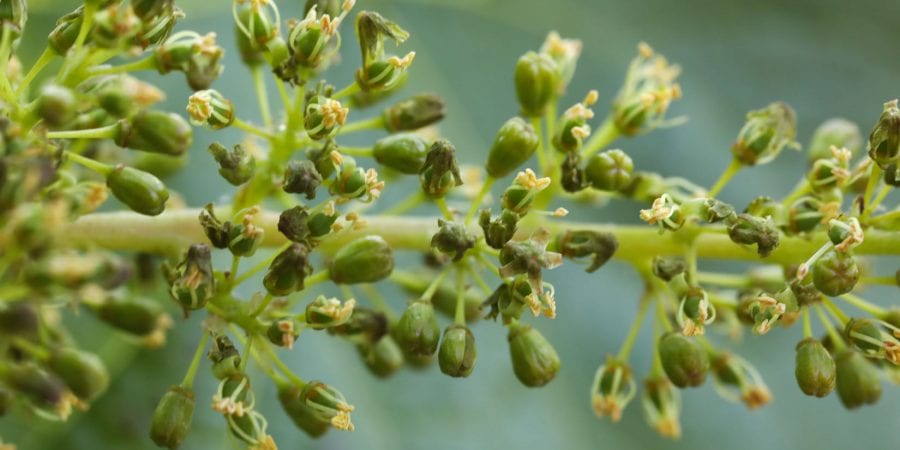…oh, how we’ve missed you!
It’s so lovely to see some nice weather at last… sunshine, double-figure temperatures and no rain (although I shouldn’t jinx us)!
And the vines are rejoicing as well.
After a long cool Spring vines have finally entered the “grand period” of growth where shoots and tendrils put on a major growth spurt.

Having said that though, temperatures have still been lower than normal.
The average regional monthly temperature was 13.9°C, 0.1°C below the November average in 2016 and 3.2 °C below the average in 2017.
Here’s hoping for a more summer-like December.
Now, let’s have a look at how this improved weather is helping the vines along…
Most Advanced
E-L 23 17-20 leaves separated, 50% caps off (flowering).
Macclesfield Chardonnay

Chardonnay is currently over one week behind 2021 and over three weeks behind 2018 (see graph). Flowering has commenced in Chardonnay, Pinot Gris and Pinot Noir across the region and is progressing rapidly under the present favourable weather conditions.

Least Advanced
E-L 17 12 leaves separated, inflorescences well developed, single flowers separated.
Sauvignon Blanc Balhannah, Lenswood, Woodside.

Sauvignon Blanc at Lenswood is currently one week behind 2018 and 2021 and three weeks behind 2019 and 2020. At present, flowering should be completed at the latest by the week before Christmas.

Loving our blog? Sign up for weekly updates straight to your inbox…
[withwine type=’join-mailing-list’]
Now, I know I linked to this past post last week, but it’s really worth visiting in a bit more detail.
Flowering is one of the most important growth stages for a vineyard and here’s why…
FLOWERING
We’ve all seen a flower (some more than others – subtle hint to my husband…)…
The main purpose of a flower, particularly the colourful petals, is to attract pollinators (like bees). The pollinators help with the fertilisation of the flower to create a fruit or seed. And while our own personal use of many flowers stops at their visual and aromatic attractiveness (along with promoting marital bliss), there is obviously more to it than that.
Also, some flowers are more important to us when it comes to the food we eat. And the wine we drink!
As it turns out, flowers are pretty complicated. So I’m going to break it down to the absolute basics (and steal, I mean borrow and reference, lots of pictures to help us along the way)…
The parts of a flower
This first picture is actually mine!

Every single one of those little round things is a flower. In this picture though, most of them are covered by the “cap”. So you can’t see the part of the flower.
Here is a better (even though I think mine is pretty good!) picture (thanks Jordan Winery!)…

And one with some useful words on it (care of this site)…

And an even better diagram (I found on the Lodi Wines website) of the whole setup (click on the image to see it up close)…
A “perfect” flower
Some of those words on that diagram above may look a little familiar (and are bringing back repressed memories from high school science). All you really need to know is that the flower of a grapevine is known as a “perfect” flower. That means that it has both male and female parts.
The male parts are called the stamen (made up of the anther and filament). The female parts are called the pistil (made up of the stigma, style and ovary).
Anyway, long story short… grapevine flowers can fertilise themselves! And because they are so close together they don’t need the help of bees to pollinate them. How clever!
Every flower is a (potential) berry
Every one of those little flowers has the potential to turn into a berry on the bunch (full of delicious juice!).
The conditions around the time of flowering determine exactly how many of those flowers become fruit.
This is why everyone has been a bit freaked out by all the rain and freezing temperatures we’ve been having. Anything other than gorgeous spring days has the potential to affect yield for vintage 2023.
Let’s hope we’ve seen the worst of the weather for this year!

